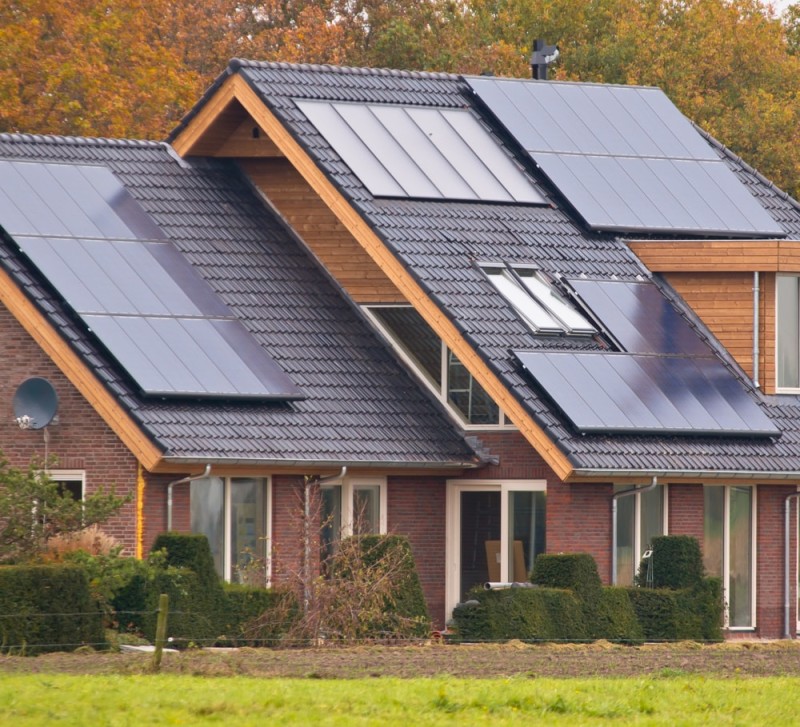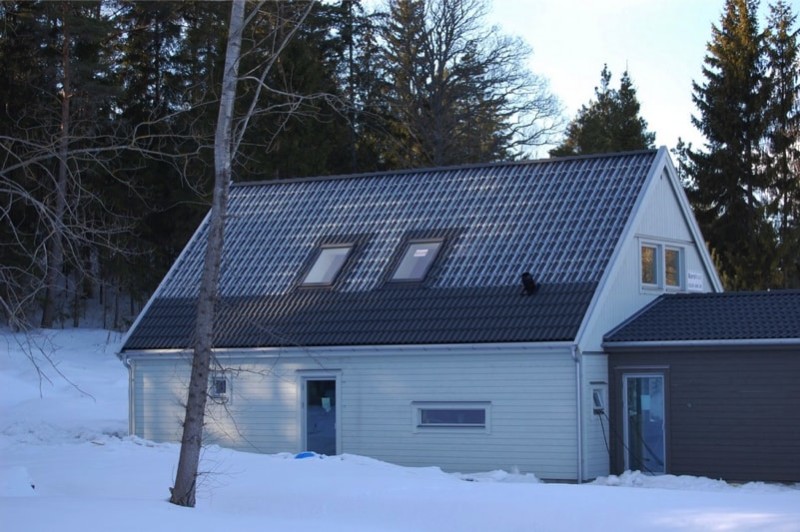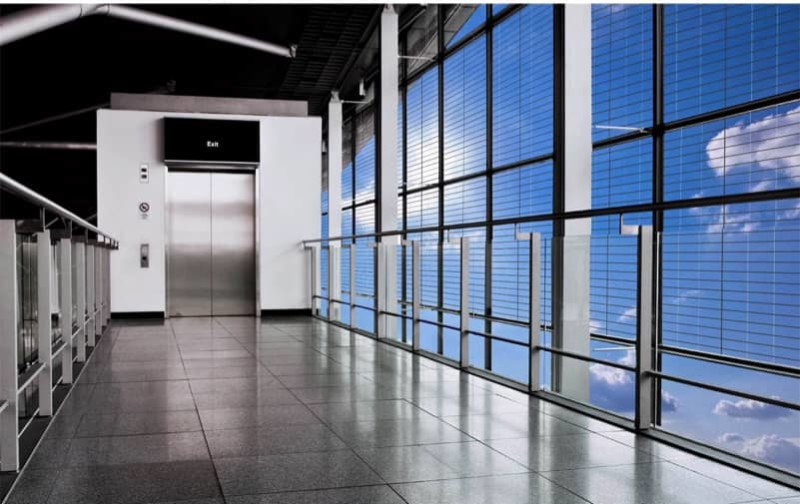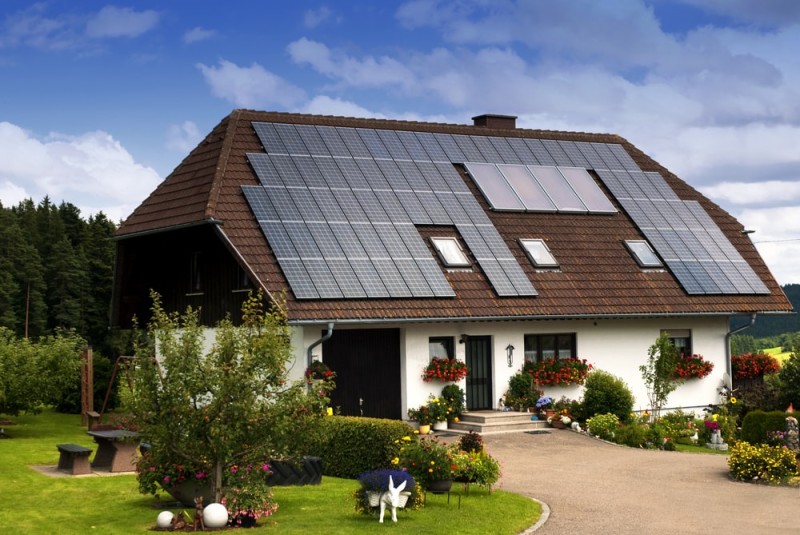
Above is a substantial newly built modern home fitted with photovoltaic solar roof panels.
Solar power is often thought of as being free, and in the truest sense, it is. However whilst the power itself may be free, the means of capturing it with a residential solar energy systems can be relatively costly, although probably not as much as you imagine. So as the old saying goes, “There really is no such thing as a free lunch”, (not to begin with anyway)
Despite the fact that you need to outlay reasonable sums of money to have solar panels installed (usually) on the roof of your home, there is definitely a relatively quick payback time meaning after that point, your residential solar energy panel system should continue to provide you with reliable consistent solar power for many years to come. So don’t get too hooked up in the upfront cost to have a system installed. These have comes down in price significantly as it has become a lot more common and the production costs have also reduced considerably as well.
Many solar power panel systems are typically designed and built to last for 25 years or more and often require little to no maintenance over that time, just a quick clean up to ensure nothing covers or blocks the panels from receiving maximum sunlight.
 This solar sunship is in the solar village Vauban in Freiburg in Germany
This solar sunship is in the solar village Vauban in Freiburg in Germany
When it comes to deciding what size of solar panel system you need for your home, there are a few things that you should take into account, and these considerations should also be considered in the following logical order;
- What is your budget?
- How much roof space do you have available for the solar panels? and
- How much power does your family household usually consume per year that you want to offset?
 Heating glass tiles for solar roofing. Image source Freshome.com
Heating glass tiles for solar roofing. Image source Freshome.com
There is no need to be concerned about the weight of the solar roof panels because when all is said and done, the weight of the completed panel installed is less per square foot than most roof tiles.
 Contemporary hot water panels on a newer house.
Contemporary hot water panels on a newer house.
When it comes the actual roof, it is true that the orientation and also the slope or pitch of your roof will matter. Ideally, you want the slope of the roof to face your all day sun (and that will depend on which hemisphere of the globe you live in) but morning or afternoon sun facing slopes will still work adequately.
The ideal roof pitch is 30°, although installation is usually fine on anything between about 10° and 50°.
 A complete solar energy powered home with very large solar panel on their roof
A complete solar energy powered home with very large solar panel on their roof
 Photo-voltaic solar panel module on private residential building
Photo-voltaic solar panel module on private residential building
 A modern equestrian farmhouse with solar panels on the roof
A modern equestrian farmhouse with solar panels on the roof
 Interesting Pythagoras solar pvgu walkway with solar windows. Image source zdnet.com
Interesting Pythagoras solar pvgu walkway with solar windows. Image source zdnet.com
 House with a few solar panels on the roof
House with a few solar panels on the roof
 Extensive roof covering of solar panels on this English home
Extensive roof covering of solar panels on this English home
 New family home housing development being built with solar panels
New family home housing development being built with solar panels
 Solar panel water heating system on a low pitch house roo
Solar panel water heating system on a low pitch house roo
 House with solar panels on roof for electricity generation
House with solar panels on roof for electricity generation
Home hot water solar panel heating system in a residential setting
